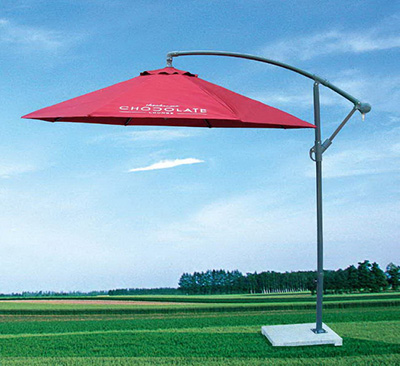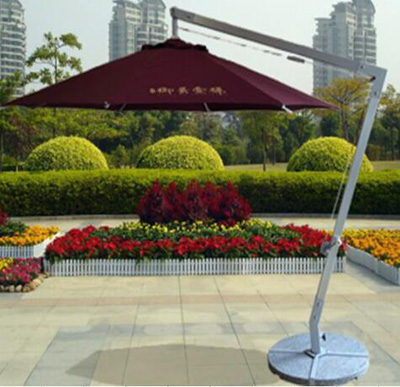1 Introduction
The development of digital workflows has undergone several stages, including PS-based workflows and PDF-based workflows. The workflow based on PDF is the current mainstream workflow.
With the development of technology and market, the digital workflow is not only limited to the pre-press department of the factory, but has been more closely integrated with all aspects of printing such as printing, process management, and design production.
As Agfa put forward a concept: "From Think to Ink", digital workflow plays an important role in the whole process from design to final printing product processing.
At present, the CIP3 interface and compliance with the JDF specification have become standard configurations of digital workflows. The ease of use, accuracy, reliability and compatibility and system integration are important indicators for judging whether a digital workflow is practical.
CTP technology is a hot topic in the printing industry. Many domestic printing companies have introduced CTP equipment. Some CTP users' equipment is running at full capacity, and some users have unsatisfactory CTP usage. The complete CTP system is more than just a platemaking machine. It includes digital workflows, digital proofing devices, direct platesetters, and digital plates. Platemakers, proofing devices, etc. are just output devices, and they are completely determined by the digital workflow. The role of digital workflow in a successful CTP system is very important.
2 1bit TIFF files
For printing manufacturers, it is of utmost importance to ensure that the documents are handled accurately and in a consistent and flexible manner in the shortest possible time. Reprint and make-up version, a set of printing plates at the same time off-site printing, changing the printing press before printing and changing the binding, paper specifications and other occasions have occurred, in this case using 1 bit TIFF file and RIP after the fight is a better solution Program.
In the 1 bit TIFF file, the dot information of the entire printing plate is recorded, and the content is exactly the same as that of the film or printing plate, so it is also called a digital film. The greatest advantage of digital film is that no matter what kind of output device is used, no matter what time it is output, the resulting plate will not have any change, and its function is the same as that of traditional film. The platesetter can also be thought of as a digital film printing machine. In the AGFA Apogee digital workflow there is a PrintDrive module whose main function is to process 1 bit TIFF files.
In the traditional plate-making workshop, the work to be done is to process the film on the imposition stage, including imposition, revision, overprinting, and even drying. In the PrintDrive module, there are also the same functions, such as imposition of digital films, revision, overprinting, even drying. PrintDrive can perform all operations on the film on a traditional imposition stage, so PrintDrive is also called a digital layout station. The digital film in PrintDrive is based on a single page and is linked to a large version of the template. All pages and templates are independent. In actual production, if you want to change the page or imposition mode, you don't need any processing, just change the link. This is especially useful for printing manufacturers. The situation of changing the layout or page in real production occurs from time to time. If the imposed file is a PDF or PS file, all pages need to be re-screened in this case, which takes a long time.
Complementary printing is also a problem often encountered in printing. During the printing process, a certain color plate was found to have problems, and a blank version was required. The printing machine stopped waiting. Minimizing press downtime is an important means for printers to increase efficiency, and the shorter the time left for making up the revision, the better. With the digital film, if the complementary version only needs to send the digital film to the platesetter, it takes time for the plate-making machine to expe- rience the flushing time, and the reprinted plate content is exactly the same as the original plate. There is no change. If there is no digital film, it will need to be re-screened, take a long time, and there are two different contributions to the screening.
For printing on cards, trademarks, etc., there is a lot of identical small files on one layout. If you want to deal with the entire layout, it takes a long time and is error-prone. With the digital film, only one small file needs to be processed, and then the whole layout is filled and it takes less time. The digital film plays the role of a traditional film and plays an important role in the production of CTP.
3 RIP after the big version
The so-called big version of the so-called RIP is to use the dot matrix data to complete the screening. Now many people talk about the RIP version, there is actually a misunderstanding, that is what is RIP, confusing the concept of multiple RIP output and multiple processing at a time.
The traditional RIP receives the PS file and the process is divided into two parts: PS file interpretation and screening. Various problems encountered in the previous PS process, such as taking place, missing words, etc., occurred in the first link, that is, the process of interpretation. To solve this problem, the current process separates these two parts. If any of the processes will be explained as part of the RIP, generate proprietary intermediate format files, while the screening network by the generator. The file used for the layout of this process is an intermediate format file, so it is also referred to as RIP after the imposition, the process is called a RIP multiple output process. Strictly speaking, this kind of process is actually a large version before the screening, and there are some problems mentioned when talking about digital films. It is not a single RIP multiple output.
The digital work flow represented by AGFA's Apogee gave the first work of traditional RIP-interpretation to PDF. Generated is a PDF file describing the page by item list. This PDF generating software is called Normalizer. The screening part is completed by RIP and digital film is generated. The imposition version is not an intermediate-format PDF file. Instead, it uses digital film files. It is a real RIP post-imposition version. Because Apogee is a true RIP post-production version, its PrintDrive module can play such a big role in the actual production of a printing plant.
A multiple RIP output is the focus of publicity for many workflows. Through the above analysis, we can see that the actual output of a RIP multiple times should actually be a multiple output of a digital film. In AGFA's Apogee workflow, PrintDrive can control multiple output devices at the same time, such as platesetters, imagesetters, and digital proofing devices. PrintDrive can send digital film to these devices at the same time, output printing plate, film or format digital proofs. This process is truly a multiple RIP output. The biggest benefit of this process is that each output device does not process the digital film and output it directly to ensure that the output of all devices is consistent.
In some processes, it is not a digital film file that is sent to the output device but a large version of an intermediate format file, such as a PDF file. After the output device receives these files, it also adds a screen or converts it into a digital proofer control file. This process should become a multiple-output process once. That is, the PS file is processed once to generate a PDF file, and the PDF file is sent to multiple devices for output. One of the risks associated with this process is multiple processes, or multiple screens. Each output device must individually process the PDF file once, and there is the possibility that multiple output devices have different output results.
4 Compatibility and System Integration
At present, almost all printing companies that have considered the CTP project already have a prepress production output department. These departments may already have workflows and imagesetters. Some manufacturers already have CTP equipment, there are still some problems in practical applications, want to change other models. The issue that they are most concerned about is how they can integrate the new system with the original system. This will not only fully protect existing investments, but will also prevent multiple processes from operating, causing chaos in production and management.
AGFA's Apogee process has always had the most extensive openness and compatibility. It can fully integrate existing user equipment, maximize its effectiveness, and ensure the system's simplicity and reliability.
From the input point of view, Apogee's new Power importer module can receive the intermediate file format of almost all prepress workflows currently, and can be converted into a standard PDF file or a TIFF IT file and integrated into the Apogee process. PrintDrive's OpenConnect can directly receive 1 bit TIFF files or film spot scan files from other processes and print them in PritnDrive.
From an output point of view, Apogee's new Raster Blaster module can directly drive nearly 100 kinds of imagesetters and plate makers from various manufacturers, as well as a variety of inkjet proofers, allowing users to continue using the original equipment and create benefits.
Using the most convenient process to handle the most accurate process and the most compatible process is the most needed workflow for the customer. This is also the goal of the current workflow development.
From dawn to dusk, the Patio Umbrella blocks the sun's glare as it moves across the sky. Crafted from the finest, highest-performing materials, the umbrella goes up easily with a pull of the cord and is held aloft by a sturdy cast-aluminum hub and pin system, and ribs. The canopy is tailored of premium, solution-dyed acrylic chosen for its extreme resistance to fading, staining, mildew, and mold. Available with an octagonal or square canopy, the umbrella performs beautifully in commercial settings or at your private residence with different marble or water base, or others design base for your selection.
Patio Umbrella contain:
side post square or round patio umbrella
central pole round or square patio umbrella
Single layer or double roof patio umbrella
Aluminum hanging umbrella




If you have any questions, please contact with us directly. Patio Umbrella are produced by Golden Eagle Outdoor Furniture With High Quality and Good Appearance. Welcome you can visit our Factory.For any inquiry,Please send mail directly to us.
Patio Umbrella
Patio Umbrella,Patio Sun Umbrella,Outdoor Patio Umbrella,Garden Patio Umbrella,Garden Umbrella
Golden Eagle Outdoor Furniture Co., LTD. , http://www.geoutdoor.com